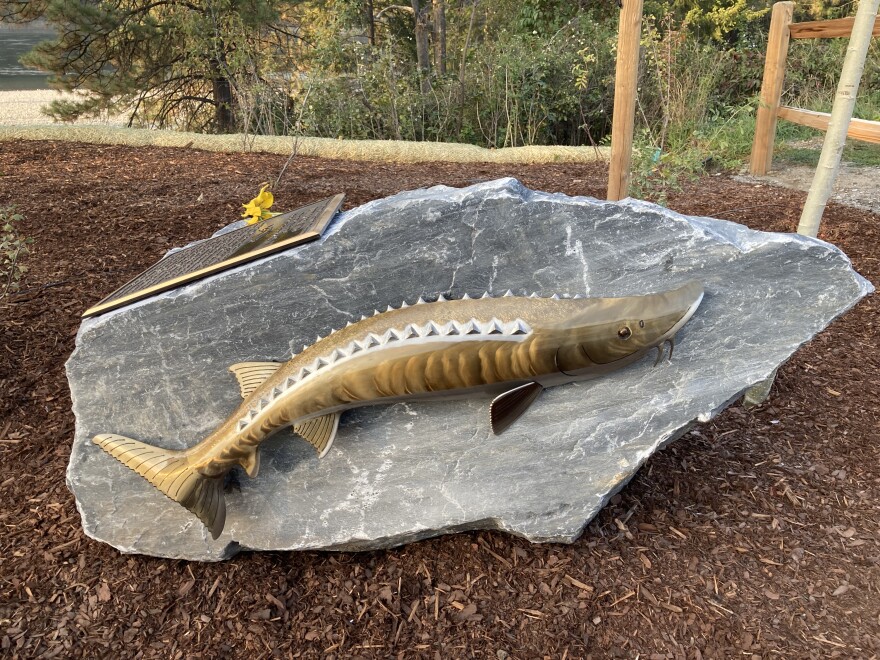The Washington state Department of Ecology has wrapped up a six-year project to scrape contaminated dirt in Northport as part of an ongoing effort to improve the rural town’s health.
Erin Andersen, site manager for the department, said the $10.9 million project focused on cleaning up the Northport waterfront, which includes a boat launch area, and access trail that people use to walk to the river and a seasonal beach, known as Black Sand Beach. A total of 28,500 tons of metals-contaminated sand, soil and slag were removed from the 11-acre project.
She said the project was mainly overseen by John Roland, who unexpectedly died from brain cancer in 2021. Roland was a supervisor with the Washington Department of Ecology’s toxic cleanup program.
“We’re just really proud of this cleanup,” Andersen said.
She said the buildup comes from the area’s history with mining and smelting in the 1920s. She said there were two smelters located in Northport, with one of them at the waterfront called, “LeRoi Smelter.” One of the problems that came with this operation was a smorgasbord of heavy metals including copper, lead and zinc that would get into the soil.
“It left behind a ton of metal waste that we found to have levels of heavy metals that are unsafe for human health or the ecosystems that are in the area,” Andersen said.
The Spokesman-Review reported in 2009 that a Canadian smelter agreed to clean up slag – essentially waste material left over from smelting and refining metal ores – at the Black Sand Beach. Through the $1 million project, the slag was recycled and sold for use in the cement industry.
While that earlier effort helped, Andersen said challenges remain because the property does not have a clearly established owner, which complicates long-term oversight. Still, she hopes the recent cleanup will help ease concerns about the town’s health issues.
“People who live in the area were starting to see that there was an unusually high amount of gastrointestinal issues and other diseases,” Andersen said.

David Fitzgerald, a metal artist from Northport, said he moved to the town in 1986 when he was only 9 years old. He recalled playing near the boat launch area, where the smelter was located, not realizing how dangerous it was.
Seeing how much was cleaned up from the area has amazed him, he said.
“They’ve done some beautiful landscaping; it’s interesting to see the transformation,” Fitzgerald said.
In honor of Roland and his dedication to the community, Fitzgerald built a sturgeon sculpture out of stainless steel and presented it during Roland’s memorial earlier this fall. Andersen said Fitzgerald’s sculpture was an important way to mark the end of the six-year cleanup.
“John loved nature, and he had a big part in working with the sturgeon fish that we have in the river up here,” Fitzgerald said.
In addition to the cleanup, Andersen said they included a few additions to the waterfront, including a trail that leads to the beach, a couple of benches that overlook the Columbia River and a pavilion area where Fitzgerald’s sculpture is located.
She added that they are still working with the town because of air quality concerns and are acquiring air monitoring equipment to help determine what residents are breathing in on a daily basis.
She also said the town is preparing to build a community center where the LeRoi Smelter once stood. Andersen said they are reviewing the site’s footprint to ensure there won’t be exposure risks for the community.
“We’re doing another cap over that area so that they can build their community center without worrying about contamination up there,” Andersen said.


